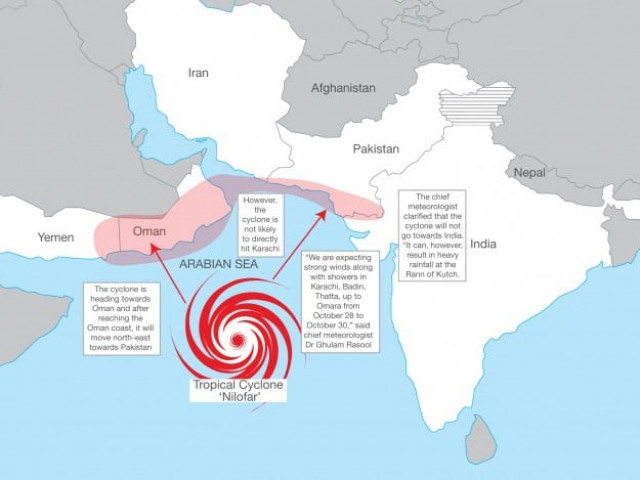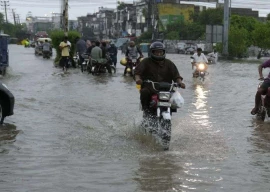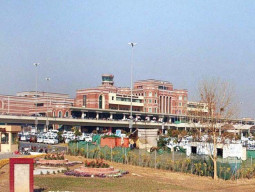
Cyclone Nilofar is likely to hit coastal regions of Gwadar and Lasbela, where deputy commissioners have been asked to adopt precautionary measures.
“Fishermen in Gwadar, Pasni, Jewani and Lasbela had been strictly directed to not go fishing in the deep sea. Those who have already left for fishing should be called back immediately,” said Director General Provincial Disaster Management Authority (PDMA) Noor Mohammed Jogezai.
Cyclone Nilofar, building in the Arabian Sea, is due to hit India’s Gujarat state and Pakistan’s southern coastal areas Friday morning.
“It is about 1175 kilometres south of Gwadar, and is moving in the north-western direction. It may result in scattered rains and thunderstorm near Gwadar,” Jogezai said, citing the report of the Meteorological department.

PHOTO: NDMA
The deputy commissioners were also directed to evacuate the areas if necessary.
“The local administration is closely monitoring the situation and following the directives of the Met office,” Jogezai said.
Gwadar was badly affected by Cyclone Phe – a tropical cyclone which hit the coastal region in 2010, wreaking havoc on the lives and property of people.
Hundreds of people were rendered homeless and were not compensated by the government, while many migrated from the area, others built mud houses on their own.
Cyclone Nilofar due to slam into India, Pakistan
Indian officials were preparing Monday to evacuate residents and stockpile food as they braced for another "very severe cyclonic storm" due to slam into the country's west coast and neighbouring Pakistan.
Cyclone Nilofar, building in the Arabian Sea, is due to hit India's Gujarat state and Pakistan's southern coastal areas on Friday morning, the Indian Meterological Department said.
"Our taluka (district) level officers have been sent to villages in the coastal areas to identify the population that is to be relocated," said M S Patel, an official from Gujarat's Kutch district that is expected to bear the brunt of the storm.
"We will start shifting people in the coastal regions from tomorrow morning," he told AFP.
India's National Disaster Response Force has been put on alert in Gujarat, while the state government was set to hold an emergency planning meeting later Monday, officials said.
The storm, packing winds of up to 125 kilometres per hour, comes after Cyclone HudHud hit India's east coast earlier this month leaving some 20 people dead.
The tail end of that cyclone also swept into neighbouring Nepal causing Himalayan snowstorms that claimed more than 40 lives in the country's worst trekking disaster.
In Pakistan, officials were on alert in case the storm turned towards Karachi and other parts of Sindh.

PHOTO: NDMA
The National Disaster Management Authority (NDMA) has warned local agencies to take precautionary measures ahead of the cyclone.
Fishermen have been advised not to venture into the open sea from Wednesday to Friday, and those already at sea have been told to come back to shore.
"We have instructed our provincial chapter to warn fishermen that they should refrain from fishing in the sea for few coming days," NDMA spokeman Ahmed Kamal told AFP.
Weather officials in both countries said the cyclone may weaken before it hits land, though it could still bring strong gusty winds and rains.
"It would become quite weaker when it would hit ours and Indian coastal areas," Pakistan's chief meteorologist Touseef Alam said.
"But strong gusty winds and modest to heavy rains with thunderstorm are expected."
India has six categories of tropical storms based on wind speeds and damage expected, with Nilofar falling into category five, the second from top.
Cyclone Phailin, which struck India last October, had winds of up to 220 kph and caused extensive damage.
India, particularly its east coast, and neighbouring Bangladesh are routinely hit by bad storms between April and November that cause deaths and widespread damage to property.

















COMMENTS
Comments are moderated and generally will be posted if they are on-topic and not abusive.
For more information, please see our Comments FAQ